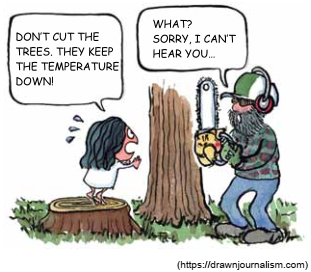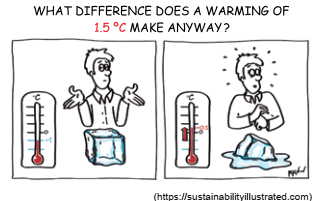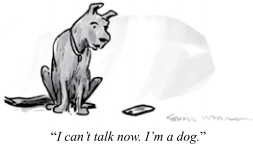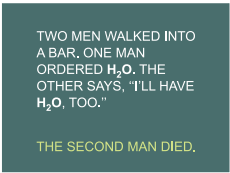Questões de Vestibular de Inglês
Foram encontradas 5.955 questões
Analise o mapa para responder à questão.

Analise o mapa para responder à questão.


De acordo com o cartum,
When will the Amazon hit a tipping point?

Scientists say climate change, deforestation and fires could cause the world’s largest rainforest to dry out. The big question is how soon that might happen. Seen from a monitoring tower above the treetops near Manaus, in the Brazilian Amazon, the rainforest canopy stretches to the horizon as an endless sea of green. It looks like a rich and healthy ecosystem, but appearances are deceiving. This rainforest — which holds 16,000 separate tree species — is slowly drying out.
Over the past century, the average temperature in the forest has risen by 1-1.5 ºC. In some parts, the dry season has expanded during the past 50 years, from four months to almost five. Severe droughts have hit three times since 2005. That’s all driving a shift in vegetation. In 2018, a study reported that trees that do best in moist conditions, such as tropical legumes from the genus Inga, are dying. Those adapted to drier climes, such as the Brazil nut tree (Bertholletia excelsa), are thriving.
At the same time, large parts of the Amazon, the world’s largest rainforest, are being cut down and burnt. Tree clearing has already shrunk the forest by around 15% from its 1970s extent of more than 6 million square kilometres; in Brazil, which contains more than half the forest, more than 19% has disappeared. Last year, deforestation in Brazil spiked by around 30% to almost 10,000 km2 , the largest loss in a decade. And in August 2019, videos of wildfires in the Amazon made international headlines. The number of fires that month was the highest for any August since an extreme drought in 2010.
(www.nature.com, 25.02.2020. Adaptado.)

O cartum ilustra que o aumento de temperatura, também
citado no texto,
When will the Amazon hit a tipping point?

Scientists say climate change, deforestation and fires could cause the world’s largest rainforest to dry out. The big question is how soon that might happen. Seen from a monitoring tower above the treetops near Manaus, in the Brazilian Amazon, the rainforest canopy stretches to the horizon as an endless sea of green. It looks like a rich and healthy ecosystem, but appearances are deceiving. This rainforest — which holds 16,000 separate tree species — is slowly drying out.
Over the past century, the average temperature in the forest has risen by 1-1.5 ºC. In some parts, the dry season has expanded during the past 50 years, from four months to almost five. Severe droughts have hit three times since 2005. That’s all driving a shift in vegetation. In 2018, a study reported that trees that do best in moist conditions, such as tropical legumes from the genus Inga, are dying. Those adapted to drier climes, such as the Brazil nut tree (Bertholletia excelsa), are thriving.
At the same time, large parts of the Amazon, the world’s largest rainforest, are being cut down and burnt. Tree clearing has already shrunk the forest by around 15% from its 1970s extent of more than 6 million square kilometres; in Brazil, which contains more than half the forest, more than 19% has disappeared. Last year, deforestation in Brazil spiked by around 30% to almost 10,000 km2 , the largest loss in a decade. And in August 2019, videos of wildfires in the Amazon made international headlines. The number of fires that month was the highest for any August since an extreme drought in 2010.
(www.nature.com, 25.02.2020. Adaptado.)
When will the Amazon hit a tipping point?

Scientists say climate change, deforestation and fires could cause the world’s largest rainforest to dry out. The big question is how soon that might happen. Seen from a monitoring tower above the treetops near Manaus, in the Brazilian Amazon, the rainforest canopy stretches to the horizon as an endless sea of green. It looks like a rich and healthy ecosystem, but appearances are deceiving. This rainforest — which holds 16,000 separate tree species — is slowly drying out.
Over the past century, the average temperature in the forest has risen by 1-1.5 ºC. In some parts, the dry season has expanded during the past 50 years, from four months to almost five. Severe droughts have hit three times since 2005. That’s all driving a shift in vegetation. In 2018, a study reported that trees that do best in moist conditions, such as tropical legumes from the genus Inga, are dying. Those adapted to drier climes, such as the Brazil nut tree (Bertholletia excelsa), are thriving.
At the same time, large parts of the Amazon, the world’s largest rainforest, are being cut down and burnt. Tree clearing has already shrunk the forest by around 15% from its 1970s extent of more than 6 million square kilometres; in Brazil, which contains more than half the forest, more than 19% has disappeared. Last year, deforestation in Brazil spiked by around 30% to almost 10,000 km2 , the largest loss in a decade. And in August 2019, videos of wildfires in the Amazon made international headlines. The number of fires that month was the highest for any August since an extreme drought in 2010.
(www.nature.com, 25.02.2020. Adaptado.)
When will the Amazon hit a tipping point?

Scientists say climate change, deforestation and fires could cause the world’s largest rainforest to dry out. The big question is how soon that might happen. Seen from a monitoring tower above the treetops near Manaus, in the Brazilian Amazon, the rainforest canopy stretches to the horizon as an endless sea of green. It looks like a rich and healthy ecosystem, but appearances are deceiving. This rainforest — which holds 16,000 separate tree species — is slowly drying out.
Over the past century, the average temperature in the forest has risen by 1-1.5 ºC. In some parts, the dry season has expanded during the past 50 years, from four months to almost five. Severe droughts have hit three times since 2005. That’s all driving a shift in vegetation. In 2018, a study reported that trees that do best in moist conditions, such as tropical legumes from the genus Inga, are dying. Those adapted to drier climes, such as the Brazil nut tree (Bertholletia excelsa), are thriving.
At the same time, large parts of the Amazon, the world’s largest rainforest, are being cut down and burnt. Tree clearing has already shrunk the forest by around 15% from its 1970s extent of more than 6 million square kilometres; in Brazil, which contains more than half the forest, more than 19% has disappeared. Last year, deforestation in Brazil spiked by around 30% to almost 10,000 km2 , the largest loss in a decade. And in August 2019, videos of wildfires in the Amazon made international headlines. The number of fires that month was the highest for any August since an extreme drought in 2010.
(www.nature.com, 25.02.2020. Adaptado.)
Examine o cartum de Sofia Warren, publicado em sua conta no Instagram em 09.03.2020.

Contribuem para o efeito de humor do cartum os seguintes
recursos expressivos:
Examine a anedota publicada pela comunidade “The Language Nerds” em sua conta no Facebook em 22.01.2020.

A anedota sugere que
Examine a tira de Alex Culang e Raynato Castro.

Para que a história tivesse um desfecho favorável à garota,
seria necessário
Text
"Many people do not wash their hands when the behavior in which they engage would warrant it," begins a recent study from Michigan State University, and I'm sorry to say it only gets grosser from there. Researchers sneakily observed 3,749 people in public restrooms and found that nearly all of them—95 percent—didn't wash their hands long enough to kill germs.
Even scarier, 15 percent of men and 7 percent of women did not wash their hands at all. When they did bother to turn on a faucet, half of men and 22 percent of women neglected to use soap! (Or, as the researchers describe it: They "attempted to wash their hands," but failed.)
The CDC says you need to wash your hands—with soap!—for at least 20 seconds in order to kill disease-causing germs.
Alas, the people in this study only washed their hands for an average of 6 seconds (...)
This extensive study founds lots of other interesting tidbits about hand-washing habits. Here are a few:
• People were more likely to wash their hands in the morning
• People were less likely to wash their hands if the sink was dirty
• People were more likely to wash their hands if there was sign to remind them
Other hand-washing research has found that college students are disgusting, people will wash their hands if they're being watched, and antibacterial soap isn't much better than the regular kind.
The study appears in the Journal of Environmental Health.
(Source: adapted from https://www.popsci.com/science/article/2013-06/only-5-percent-people-wash-their-hands-correctly)
Text
"Many people do not wash their hands when the behavior in which they engage would warrant it," begins a recent study from Michigan State University, and I'm sorry to say it only gets grosser from there. Researchers sneakily observed 3,749 people in public restrooms and found that nearly all of them—95 percent—didn't wash their hands long enough to kill germs.
Even scarier, 15 percent of men and 7 percent of women did not wash their hands at all. When they did bother to turn on a faucet, half of men and 22 percent of women neglected to use soap! (Or, as the researchers describe it: They "attempted to wash their hands," but failed.)
The CDC says you need to wash your hands—with soap!—for at least 20 seconds in order to kill disease-causing germs.
Alas, the people in this study only washed their hands for an average of 6 seconds (...)
This extensive study founds lots of other interesting tidbits about hand-washing habits. Here are a few:
• People were more likely to wash their hands in the morning
• People were less likely to wash their hands if the sink was dirty
• People were more likely to wash their hands if there was sign to remind them
Other hand-washing research has found that college students are disgusting, people will wash their hands if they're being watched, and antibacterial soap isn't much better than the regular kind.
The study appears in the Journal of Environmental Health.
(Source: adapted from https://www.popsci.com/science/article/2013-06/only-5-percent-people-wash-their-hands-correctly)
Text
"Many people do not wash their hands when the behavior in which they engage would warrant it," begins a recent study from Michigan State University, and I'm sorry to say it only gets grosser from there. Researchers sneakily observed 3,749 people in public restrooms and found that nearly all of them—95 percent—didn't wash their hands long enough to kill germs.
Even scarier, 15 percent of men and 7 percent of women did not wash their hands at all. When they did bother to turn on a faucet, half of men and 22 percent of women neglected to use soap! (Or, as the researchers describe it: They "attempted to wash their hands," but failed.)
The CDC says you need to wash your hands—with soap!—for at least 20 seconds in order to kill disease-causing germs.
Alas, the people in this study only washed their hands for an average of 6 seconds (...)
This extensive study founds lots of other interesting tidbits about hand-washing habits. Here are a few:
• People were more likely to wash their hands in the morning
• People were less likely to wash their hands if the sink was dirty
• People were more likely to wash their hands if there was sign to remind them
Other hand-washing research has found that college students are disgusting, people will wash their hands if they're being watched, and antibacterial soap isn't much better than the regular kind.
The study appears in the Journal of Environmental Health.
(Source: adapted from https://www.popsci.com/science/article/2013-06/only-5-percent-people-wash-their-hands-correctly)
Text
A French art expert believes a charcoal drawing kept in a collection for more than 150 years may be a preparatory sketch made by Leonardo da Vinci of the Mona Lisa.
The black-and-white drawing of a woman, nude from the waist up, known as the Monna Vanna, was previously attributed to Leonardo’s studio, suggesting it was done in his style by a pupil or follower, not by the master himself.
But after preliminary tests at the Louvre Museum, experts believe the sketch may well have been drawn by Leonardo.
Among the signs, according to curator Mathieu Deldicque, are the fact the drawing was made during the same period as the Mona Lisa, the paper is from the same region of Italy, and the technique is very similar to that of the Mona Lisa.
“We know the drawing was made during the lifetime of Leonardo da Vinci, we know that the paper was made in Italy, between Venice and Florence, and the third discovery is the high quality of this drawing in the face of the Monna Vanna and in her arms,” Deldicque told reporters.
“That’s very interesting because the arms are the same as the Mona Lisa‘s.”
Leonardo, who lived from 1452 to 1519, was an engineer, scientist, inventor and sculptor, as well as one of the finest artists of the Italian Renaissance.
He painted the Mona Lisa, also known as La Gioconda and regarded as the world’s most valuable artwork, at the beginning of the 16th century. It is believed to depict Lisa Gherardini, the wife of a successful merchant.
EXCITING
The charcoal portrait, in which the woman is holding a similar pose to the Mona Lisa but with her body more side-on and her head turned further over her left shoulder, has been held in a collection at the Conde Museum at the Palace of Chantilly, north of Paris, since 1862.
The Mona Lisa and Monna Vanna hold their hands in very similar ways, the right hand across the left and resting on the forearm, the fingers gently extended.
Deldicque said that while it was exciting to think the charcoal drawing was created by Leonardo, there were more tests to be done.
“We have one more month of analysis and then a very slow process of history of art with a collection of analysts and advice by specialists,” he said.
It is possible that process will determine that the authorship is the same. But it may also be inconclusive, he said, adding:
“Maybe the mystery will remain.”
(Source: adapted from http://www.reuters.com/article/us-france-monalisa-sketch/is-16th-century-charcoal-sketch-a-naked-mona-lisa-idUSKCN1C42LD, retrieved on October 1, 2017)
Text
A French art expert believes a charcoal drawing kept in a collection for more than 150 years may be a preparatory sketch made by Leonardo da Vinci of the Mona Lisa.
The black-and-white drawing of a woman, nude from the waist up, known as the Monna Vanna, was previously attributed to Leonardo’s studio, suggesting it was done in his style by a pupil or follower, not by the master himself.
But after preliminary tests at the Louvre Museum, experts believe the sketch may well have been drawn by Leonardo.
Among the signs, according to curator Mathieu Deldicque, are the fact the drawing was made during the same period as the Mona Lisa, the paper is from the same region of Italy, and the technique is very similar to that of the Mona Lisa.
“We know the drawing was made during the lifetime of Leonardo da Vinci, we know that the paper was made in Italy, between Venice and Florence, and the third discovery is the high quality of this drawing in the face of the Monna Vanna and in her arms,” Deldicque told reporters.
“That’s very interesting because the arms are the same as the Mona Lisa‘s.”
Leonardo, who lived from 1452 to 1519, was an engineer, scientist, inventor and sculptor, as well as one of the finest artists of the Italian Renaissance.
He painted the Mona Lisa, also known as La Gioconda and regarded as the world’s most valuable artwork, at the beginning of the 16th century. It is believed to depict Lisa Gherardini, the wife of a successful merchant.
EXCITING
The charcoal portrait, in which the woman is holding a similar pose to the Mona Lisa but with her body more side-on and her head turned further over her left shoulder, has been held in a collection at the Conde Museum at the Palace of Chantilly, north of Paris, since 1862.
The Mona Lisa and Monna Vanna hold their hands in very similar ways, the right hand across the left and resting on the forearm, the fingers gently extended.
Deldicque said that while it was exciting to think the charcoal drawing was created by Leonardo, there were more tests to be done.
“We have one more month of analysis and then a very slow process of history of art with a collection of analysts and advice by specialists,” he said.
It is possible that process will determine that the authorship is the same. But it may also be inconclusive, he said, adding:
“Maybe the mystery will remain.”
(Source: adapted from http://www.reuters.com/article/us-france-monalisa-sketch/is-16th-century-charcoal-sketch-a-naked-mona-lisa-idUSKCN1C42LD, retrieved on October 1, 2017)